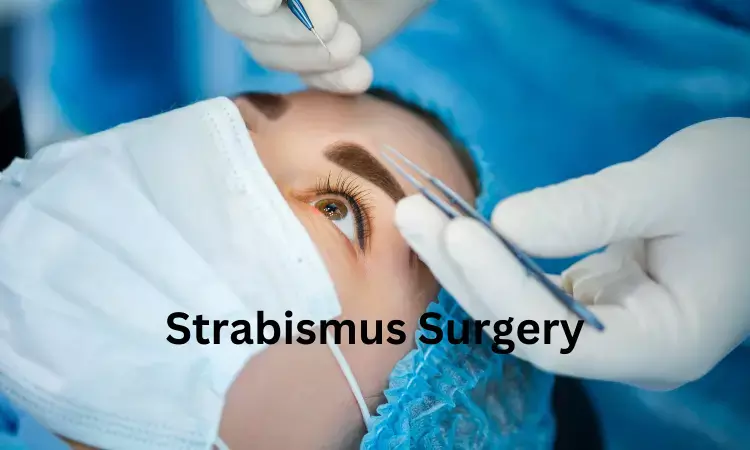- Home
- Medical news & Guidelines
- Anesthesiology
- Cardiology and CTVS
- Critical Care
- Dentistry
- Dermatology
- Diabetes and Endocrinology
- ENT
- Gastroenterology
- Medicine
- Nephrology
- Neurology
- Obstretics-Gynaecology
- Oncology
- Ophthalmology
- Orthopaedics
- Pediatrics-Neonatology
- Psychiatry
- Pulmonology
- Radiology
- Surgery
- Urology
- Laboratory Medicine
- Diet
- Nursing
- Paramedical
- Physiotherapy
- Health news
- Fact Check
- Bone Health Fact Check
- Brain Health Fact Check
- Cancer Related Fact Check
- Child Care Fact Check
- Dental and oral health fact check
- Diabetes and metabolic health fact check
- Diet and Nutrition Fact Check
- Eye and ENT Care Fact Check
- Fitness fact check
- Gut health fact check
- Heart health fact check
- Kidney health fact check
- Medical education fact check
- Men's health fact check
- Respiratory fact check
- Skin and hair care fact check
- Vaccine and Immunization fact check
- Women's health fact check
- AYUSH
- State News
- Andaman and Nicobar Islands
- Andhra Pradesh
- Arunachal Pradesh
- Assam
- Bihar
- Chandigarh
- Chattisgarh
- Dadra and Nagar Haveli
- Daman and Diu
- Delhi
- Goa
- Gujarat
- Haryana
- Himachal Pradesh
- Jammu & Kashmir
- Jharkhand
- Karnataka
- Kerala
- Ladakh
- Lakshadweep
- Madhya Pradesh
- Maharashtra
- Manipur
- Meghalaya
- Mizoram
- Nagaland
- Odisha
- Puducherry
- Punjab
- Rajasthan
- Sikkim
- Tamil Nadu
- Telangana
- Tripura
- Uttar Pradesh
- Uttrakhand
- West Bengal
- Medical Education
- Industry
Laser speckle contrast imaging may accurately monitor anterior segment perfusion during strabismus surgery

Strabismus surgery is a common eye muscle surgery to treat strabismus or simply crossed eyes. This procedure helps in tightening or loosening eye muscles and aligns the position of the eyes so they're centered and can work together.
However the eye surgery is known to cause a dreaded complication of anterior segment ischaemia (ASI), caused by damage to the anterior ciliary arteries. To avoid ASI, a maximum of two rectus muscles are operated on at a time. Till date there is no method available for perioperative, real-time perfusion measurements during ocular muscle surgery.
A new study in BMJ Opthalmology aimed to investigate whether laser speckle contrast imaging (LSCI) could be used for such measurements, and to monitor perfusion during strabismus surgery on one or two horizontal rectus muscles.
Researchers state that this is the first ever study conducted to monitor perfusion during surgery in the anterior segment, with LSCI two muscles were easily deatched with a very little effect on the circulation in the anterior segment leading to lesser complications post operatively. The use of LSCI in strabismus surgery may allow for accurate and noninvasive monitoring of the anterior segment perfusion intraoperatively.
Researchers in a cohort evaluated Forty-four eyes in 44 patients with horizontal strabismus who underwent corrective surgery involving medial and/or lateral rectus muscle detachment. Perfusion in the adjacent paralimbal and iris tissue was monitored with LSCI.
The key findings of the study are
• When the first horizontal rectus muscle was detached perfusion in the adjacent paralimbal tissue decreased by 23% (p<0.0001), and by 12% (p<0.0001) when the second muscle was detached.
• The iris perfusion decreased by 5% (p<0.05) when the first muscle was detached but showed no significant decrease as the second muscle was cut.
Researchers concluded that “This is the first study showing that perfusion of the anterior segment can be monitored non-invasively with LSCI during strabismus surgery. In this cohort, two horizontal rectus muscles were detached with only a small decrease in the anterior segment circulation. Future studies are required for complete mapping of the effect of surgery on multiple ocular muscles on the anterior segment circulation.
Reference: Engqvist L, Sheikh R, Albinsson J, et al Laser speckle contrast imaging enables perfusion monitoring of the anterior segment during strabismus surgery: a study on the horizontal rectus muscles; British Journal of Ophthalmology 2023;107:1704-1708.
MSc. Neuroscience
Niveditha Subramani a MSc. Neuroscience (Faculty of Medicine) graduate from University of Madras, Chennai. Ambitious in Neuro research having worked in motor diseases and neuron apoptosis is interested in more of new upcoming research and their advancement in field of medicine. She has an engrossed skill towards writing and her roles at Medical dialogue include Sr. Content writer. Her news covers new discoveries and updates in field of medicine. She can be reached at editorial@medicaldialogues.in
Dr Kamal Kant Kohli-MBBS, DTCD- a chest specialist with more than 30 years of practice and a flair for writing clinical articles, Dr Kamal Kant Kohli joined Medical Dialogues as a Chief Editor of Medical News. Besides writing articles, as an editor, he proofreads and verifies all the medical content published on Medical Dialogues including those coming from journals, studies,medical conferences,guidelines etc. Email: drkohli@medicaldialogues.in. Contact no. 011-43720751


